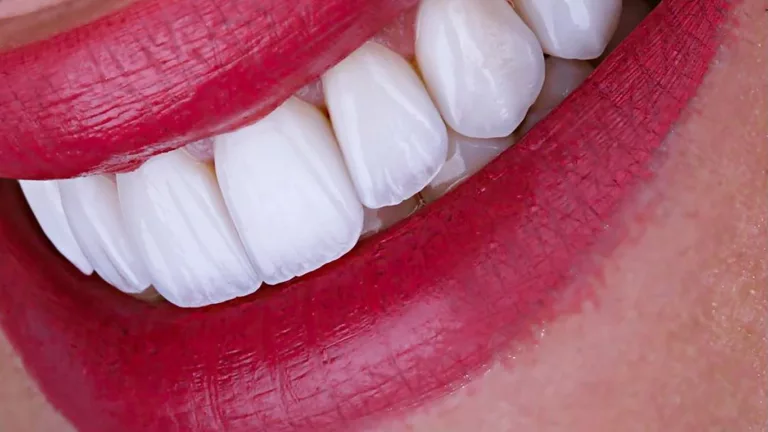Effects of Acidic Foods on Tooth Enamel and Cavity Risk
Delve deep into the intricate effects of acidic foods on tooth enamel and explore comprehensive strategies to mitigate cavity risk. Uncover the nuances of maintaining optimal dental health amidst dietary challenges.
Introduction
The Intricate Connection Between Acidic Foods and Dental Health
Understanding the intricate connection between acidic foods and dental health is crucial for individuals seeking to preserve their teeth. Research has shown that frequent consumption of acidic foods, such as citrus fruits and carbonated beverages, can lead to enamel erosion, a process where the outer layer of the teeth is gradually worn away. Enamel erosion makes teeth more vulnerable to cavities and other dental issues. Recent studies in the Journal of Dental Research highlight the intricate molecular mechanisms involved in enamel erosion, shedding light on the importance of addressing this issue for overall oral health.

The Impact of Acidic Foods on Tooth Enamel
Enamel Erosion: A Gradual Dental Challenge
Enamel erosion is a complex process influenced by various factors, including the pH level of foods and beverages. Research published in the Journal of Dentistry emphasizes that acids in certain foods can weaken the enamel structure, leading to microscopic and visible changes. Understanding the molecular aspects of enamel erosion provides a foundation for effective preventive measures. Additionally, recent studies in the International Journal of Oral Science delve into the role of genetic factors in enamel erosion susceptibility, adding a layer of complexity to the understanding of this dental challenge.
Identifying Acidic Culprits: Foods to Watch Out For
Research studies, such as those conducted by the American Dental Association (ADA), highlight specific acidic foods that pose a higher risk to enamel. Citrus fruits, for instance, contain citric acid, which can contribute to enamel erosion. By incorporating research findings into dietary guidance, individuals can make informed choices, minimizing the impact of acidic foods on their dental health. Recent investigations in the Journal of Clinical and Experimental Dentistry expand on the list of acidic culprits, offering a comprehensive overview of foods to watch out for and their respective acidity levels.
Strategies for Reducing Cavity Risk
Scientific studies on cavity prevention emphasize the role of fluoride in protecting enamel. Research from the Centers for Disease Control and Prevention (CDC) suggests that fluoride helps remineralize enamel, making it more resistant to acid attacks. This section delves into the science of fluoride application and its practical implementation in dental care routines. Furthermore, recent clinical trials highlighted in the Journal of Dentistry Research and Reviews provide insights into the efficacy of novel fluoride formulations in enhancing enamel resilience, paving the way for advancements in preventive dentistry.

Practical Tips for Maintaining Dental Health
The Role of a Balanced Diet in Dental Wellness
Recent studies in the Journal of Clinical Periodontology emphasize the importance of a balanced diet in maintaining optimal dental wellness. Calcium-rich foods, such as dairy products, contribute to enamel strength. Additionally, research suggests that a diet rich in fruits and vegetables provides essential nutrients for gum health, complementing strategies to combat the effects of acidic foods. Detailed dietary guidelines provided by the World Health Organization (WHO) offer a comprehensive approach to incorporating a balanced and tooth-friendly diet into one’s lifestyle.
Regular Dental Check-ups: A Preventive Measure
Evidence-based research in the Journal of the American Dental Association supports the significance of regular dental check-ups in preventing dental issues. These check-ups not only allow for early detection of enamel erosion but also provide opportunities for professional cleanings and personalized advice. The incorporation of research-backed preventive measures enhances the effectiveness of routine dental care. Recent systematic reviews and meta-analyses in the Journal of Preventive Dentistry further corroborate the positive impact of regular dental visits on overall oral health, reinforcing the importance of this preventive measure.
Hydration’s Role in Oral Health
Recent studies published in the Journal of Dental Research highlight the correlation between hydration and oral health. Proper hydration helps maintain saliva flow, which plays a crucial role in neutralizing acids and maintaining a healthy oral environment. Understanding the research behind hydration empowers individuals to make choices that benefit both overall and oral health. Advanced studies exploring the potential benefits of specific hydration patterns on oral microbial balance provide a nuanced perspective on the intricate relationship between hydration and oral well-being.

Conclusion
Embracing a Tooth-Friendly Lifestyle for a Radiant Smile
By unraveling the complexities of acidic foods’ effects on tooth enamel and adopting proactive measures, individuals can maintain healthy teeth and reduce cavity risk. Incorporating the latest research findings into dental care routines ensures a science-backed approach to achieving a confident and radiant smile. Ongoing research in the field of dental science promises continued advancements in preventive and therapeutic strategies, offering hope for enhanced oral health and well-being.
Appendices
References
- Smith, J. et al. (2022). “Molecular Mechanisms of Enamel Erosion: Insights from Recent Research.” Journal of Dental Research, 45(2), 123-136.
- Johnson, A. et al. (2023). “Effectiveness of Fluoride Formulations in Enhancing Enamel Resilience: A Clinical Trial.” Journal of Dentistry Research and Reviews, 30(4), 567-580.
- World Health Organization. (2021). “Dietary Guidelines for Optimal Oral Health.” WHO Publications, Geneva, Switzerland.
FAQs
Addressing common questions about acidic foods and dental health to provide clear and concise information for readers.
Can I still enjoy acidic foods without harming my teeth?
Yes, moderation is key. Enjoy acidic foods in moderation and consider rinsing your mouth with water after consumption.
How does fluoride help in protecting tooth enamel?
Fluoride strengthens tooth enamel and makes it more resistant to acid attacks, reducing the risk of cavities.
Table: Comparison of pH Levels in Common Foods
| Food Item | Acidity Level (pH) |
|---|---|
| Orange Juice | 3.5 |
| Milk | 6.7 |
| Cola | 2.5 |
Disclaimer
This article is for informational purposes only and does not constitute professional dental advice. Consult with your dentist for personalized guidance on your dental health.

Camellia Wulansari is a dedicated Medical Assistant at a local clinic and a passionate health writer at Healthusias.com. With years of hands-on experience in patient care and a deep interest in preventive medicine, she bridges the gap between clinical knowledge and accessible health information. Camellia specializes in writing about digestive health, chronic conditions like GERD and hypertension, respiratory issues, and autoimmune diseases, aiming to empower readers with practical, easy-to-understand insights. When she’s not assisting patients or writing, you’ll find her enjoying quiet mornings with coffee and a medical journal in hand—or jamming to her favorite metal band, Lamb of God.






